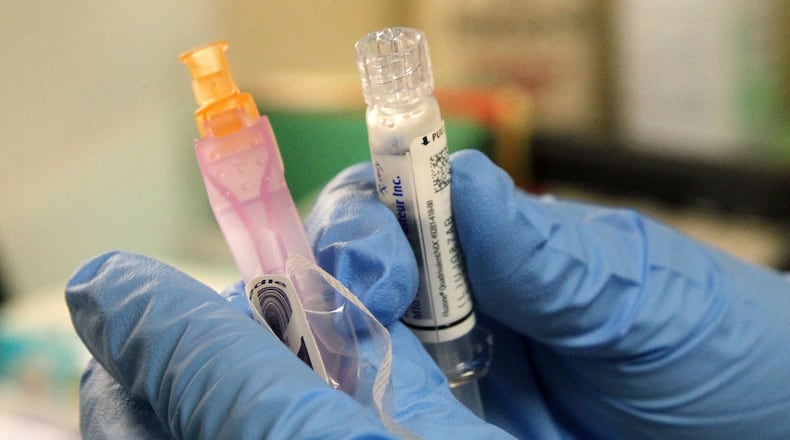“Flu season is upon us,” said Mark Hurst, medical director of the Ohio Department of Health. “I know we all love spending time with our loved ones around the holidays, so the most loving thing you could do is get your flu shot, or stay home if you’ve tested positive for the flu.”
RELATED: Flu activity up at start of season, experts recommend vaccines
Hurst said the flu is very unpredictable. From Nov. 11 to Nov. 17, 2018, there were 86 influenza-related hospitalizations — about a quarter less hospitalizations than there have been this year. The year saw 130 flu-related hospitalizations before that span.
The contagious respiratory illness last season led to more than 9,800 hospitalizations and four deaths of children in Ohio, along with numerous milder bouts of illness that resulted in missed work and school. It also was a long flu season, with U.S. activity elevated for 21 weeks and two waves of flu.
“There is nothing we’re seeing right now that would indicate that this flu season as a whole is going to be worse than in years past,” Hurst said.
RELATED: Dayton Children’s Hospital sees first flu admissions, restricts some visitors
Hurst recommends getting a flu shot as soon as possible. The flu vaccine takes up to two weeks to become fully effective.
Some people are at particularly high risk for flu complications, such as those 65 years and older, young children, those who are pregnant, those with asthma, diabetes, cancer or HIV/AIDS.
Missy Fink, program manager of the Senior Emergency Department at Atrium Medical Center, said once people turn 65 their immune systems weaken and they’re more susceptible to flu-like symptoms. According to the Centers for Disease Control and Prevention, 70 to 90 percent of those who die every year from the flu are 65 and older.
U.S. Health and Human Services Secretary Alex Azar said that flu vaccination coverage estimates for 2018-19 showed 45 percent of Americans adults got a flu vaccine, while nearly 63 percent of children were vaccinated.
Adults 18 to 49 years old were the least vaccinated, at 35 percent.
RELATED: What is the flu? 17 things to know about flu symptoms, flu shot side effects and more
Vaccinations among kids across all ages, 6 months through 17 years, was almost 63 percent— an increase of almost 5 percentage points from 2017-18 and about 3 percentage points from 2016-17. Coverage was highest among the youngest kids, (6 months to 4 years), at 73 percent, while about 52 percent of teens were vaccinated last season.
Each year scientists formulate the vaccine based on what types of flu strain they expect. This year the vaccine includes protections against H1N1 and H3N2. It’s still possible to become sick by catching a different strain not covered in the vaccine.
Middletown Health Commissioner Jackie Phillips said along with getting vaccinated there are other “first lines of defense,” including staying home if possible if you are sick, covering your mouth and nose when you cough, eating healthy, getting proper sleep, drinking fluids and good hand-washing habits.
Tamiflu or its generic can be prescribed and taken within 48 hours of symptoms and helps make flu symptoms less severe.
RELATED: Last year’s flu season may be worst in years
Hurst said January and February are typically the peak months for flu-related hospitalizations.


